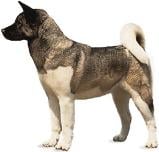
This is a placeholder text
Group text
by huntshep on 17 July 2005 - 23:07
I have a 7 month old male that has a bursa on his elbow caused from trauma. His elbows have pre-limbed and are good by OFA standards.
Has anyone had this and what treatment was taken. I want to show him but would like to correct this. Removal of the fluid by aspiration did not work. I am considering putting in the drain tube. Would like to hear from anyone with experience dealing with this.
by oso on 18 July 2005 - 01:07
This sounds like elbow hygroma, if you do a search you will find more posts on this. Don't get them drained - too much risk of infection and very difficult for the wounds to heal as the elbows are constantly being leant on and bent etc. Firstly you need to protect the elbows from trauma, there is a product called dog leggs which I got from the internet, its neoprene pads for elbows that stayed on really well, good, as the dog doesn't always choose to lie an a soft surface. We also used an antiinflammatory injected into the elbow joint, can't rembember the name but it should be in one of my earlier posts, if not I can look it up. This reduced the swelling quickly (we had previously gone through nightmares with draining, unhealed wounds, repeated recurrences...). The good news that my dog, who developed the problem at about the same age as yours , is now 3 years, his elbows have been fine for the last two years, he has competed in shows. I think it happens in young dogs that are on the heavy side and put pressure on the elbows before a protective callous has developed. It has nothing to do with elbow dysplasia. Its an anoying problem, but the worst thing you can do is get a drain put in.
by huntshep on 18 July 2005 - 01:07
Oso-Thank you for the info. I have already purchased the dog leggs. I mentioned the x-rays only because it involved elbows and many assume it is elbow dysplasia. I would be interested in the name of the injection. Also how long was it that you saw results. My dog now has no choice but to sleep on a extremely padded crate and he must wear the dog leggs when in the house since he slams down on his elbows like they are of steel.
by lioness9918 on 18 July 2005 - 02:07
rimadyl now comes in injectable form (non-steroidal anti-inflammatory)
by huntshep on 18 July 2005 - 03:07
Does anyone know what is DMSO? I looked at some past posts that reflected the use of this product but it did not indicate what form was used-ie gel compound or tablets?
by lioness9918 on 18 July 2005 - 04:07
this is not veterinary advice:
2 oz of DMSO and 2ml of Dexamethsone mixed together and rubbed on the area AM and PM, wear gloves or use a bottle dobber like they used for shoe polish (i believe dmso is a carcinogen)
***just info...
Elbow bursitis: At the tip of the elbow (the olecranon area), there is a bursa, a fluid-filled sac that functions as a gliding surface to reduce friction with motion. This bursa is known as the olecranon bursa. Because of its location, the olecranon bursa is subject to trauma, ranging from simple repetitive weight bearing while leaning, to banging in a fall. This trauma can cause a common, aseptic form of bursitis (olecranon bursitis) with varying degrees of swelling, warmth, tenderness and redness in the area overlying the point of the elbow.If non-infectious, elbow bursitis treatment includes rest, ice, and medications for inflammation and pain. Infectious bursitis is treated with antibiotics, aspiration, and surgery. http://www.kemc.edu/e.html
by hodie on 18 July 2005 - 04:07
DMSO is dimethyl sulfoxide. It is a solvent used in industry, biomedical research and as well as in the pharmaceutical industry. It is a questionable carcinogen and there is experimental data which suggests it is tunorigenic. It is mildly to moderately toxic, depending on route of administration and a skin and eye irritant. It is listed in the Toxic Substances Control Act inventory and is under study, or has been, in the EPA genetic toxicology program.
Some people think it is efficacious as a linament and use it on horses and even themselves. It is categorized in such uses as an anti-inflammatory, possible analgesic and a carrier solvent which, like most solvents in contact with tissue, enhances absorbtion of other substances. It comes as a liquid and gels. Evidence for its ability to reduce inflammation is mostly anecdotal.
Like many substances, this is likely a chemical where one can say that it is the "dose that makes the poison"......
Sharyn
by Blitzen on 18 July 2005 - 04:07
If you ever get DMSO on your bare hands, you'll immediately taste it; it has very strong garlic-like flavor. Vets I worked for mixed it with liquid medications like tresaderm to make ear drops for dogs. I'm not sure I'd use it for a hygroma, too much chance of a secondary bacterial infection since the DMSO could carry bacteria into the damaged bursa. The only treatments I ever saw were aspiration followed with a fairly tight bandage to compress the bursa or inserting a penrose drain. If you haven't already done so, you might want to provide soft bedding for your doggie too, it could help.
by Sue-Ann on 19 July 2005 - 13:07
My male had this at about the same age. The vet had seen this before, and recommended no treatment. Apparently this is common in horses? We changed the dog's bedding and in a few short weeks he was fine. He's now 10 years old and has never had trouble since.
Contact information Disclaimer Privacy Statement Copyright Information Terms of Service Cookie policy ↑ Back to top




